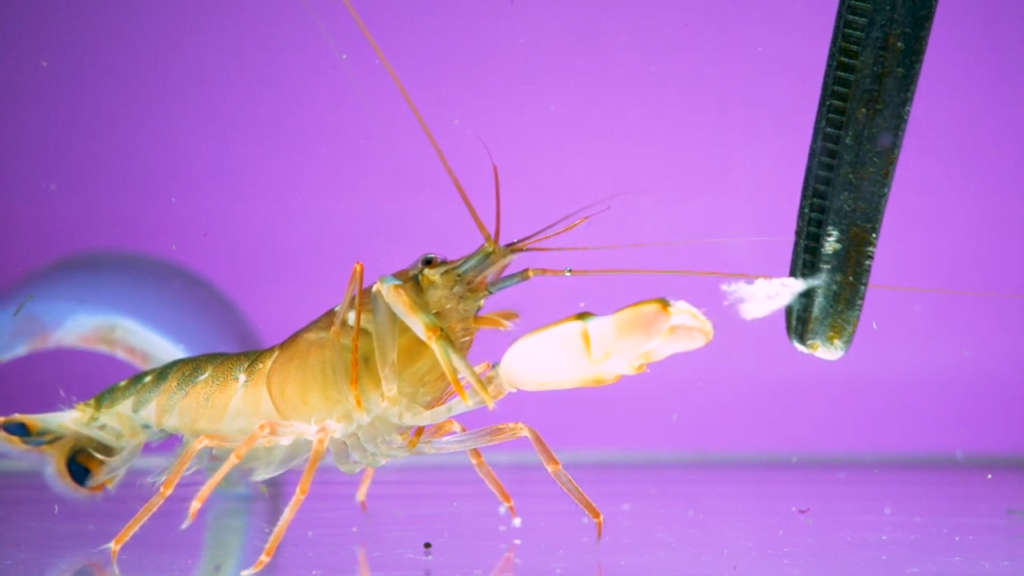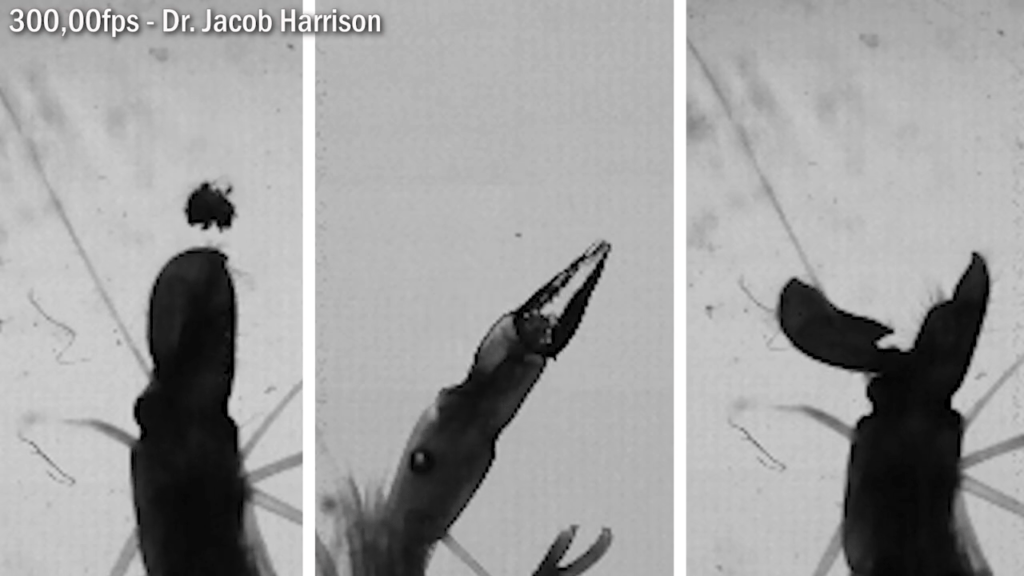Gram for gram, few animals can match the power of a pistol shrimp’s snap. When its claw closes, the shrimp ejects a jet of water so fast that the water pressure drops below the vapor pressure, causing a cavitation bubble. Like other cavitation bubbles, this one is short-lived, growing and collapsing (and sending out shock waves!) in less than a millisecond. That’s enough to knock any predator or prey for a loop. (Image and video credit: Ant Lab)
Tag: pistol shrimp

Galapagos Week: Pistol Shrimp
One of the most striking things about snorkeling in the Galapagos was how loud it was underwater. There were hardly any boats nearby, but every time my ears dipped below the surface, I could hear a constant cacophony of sound. Some it came from waves against the sand, some of it was the sound of parrotfish nibbling on coral, but a lot of it was likely the work of a culprit I couldn’t see hidden in the sand: the pistol shrimp.
These small crustaceans hunt with an oversized claw capable of snapping shut at around 100 kph. When the two halves of the claw come together, they push out a high-speed jet of water. High velocity means low pressure – a low enough pressure, in fact, to drop nearby water below its vapor pressure, causing bubbles to form and expand. These cavitation bubbles collapse quickly under the hydrostatic pressure of the surrounding water, creating a distinctive pop that makes the pistol shrimp one of the loudest sea creatures around. (Image credit: BBC Earth Unplugged, source; research credit: M. Versluis et al.)
All week we’re celebrating the Galapagos Islands here on FYFD. Check out previous posts in the series here.

Turning Sound into Light
Sonoluminescence – the creation of light from sound – was discovered in the 1930s, and, due to the difficulty of obtaining direct measurements, the exact mechanism remains highly debated even today. The phenomenon typically takes place within a tiny cavitation bubble inside a liquid. When bombarded with ultrasonic sound, such a bubble will repeatedly expand and collapse. Once a bubble is established, the cycle can be kicked off by increasing the driving acoustic pressure. This will collapse the bubble, drastically increasing its pressure and temperature (up to thousands of degrees Kelvin) and causing the bubble to emit a pulse of light before the pressure imbalance causes it to expand again. Several theories exist as to how the light is generated, the leading one being that the high temperatures in the bubble ionize the noble gases within and that those free electrons emit light via thermal bremstrahlung radiation. Sonoluminescence happens outside the lab, too. Both the previously discussed pistol shrimp and the mantis shrimp generate such light-emitting bubbles when hunting. (Video credit: The Point Studios; suggested by Bobby E.)

The Pistol Shrimp’s Secret Weapon
The pistol shrimp (or pistol crab) is a finger-sized crustacean with a fluid dynamical superpower. When it snaps its claw, a jet of water shoots out so quickly (62 mph) that a low-pressure bubble forms in its wake. When the bubble collapses, it emits a bang and a flash of light in a process known as sonoluminescence. The whole event takes less than 300 microseconds. The light emitted suggests that temperatures inside the bubble reach 5,000 degrees Kelvin, around the temperature of the surface of the sun. #




